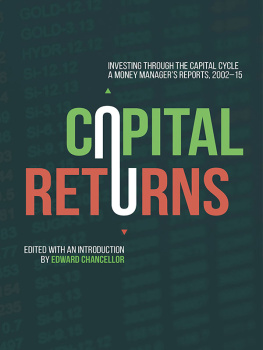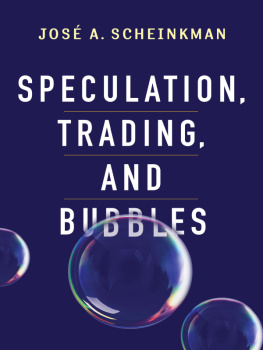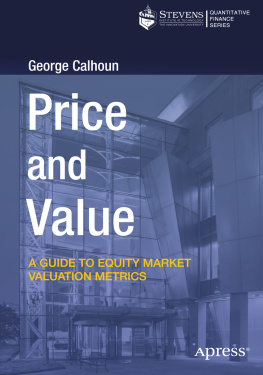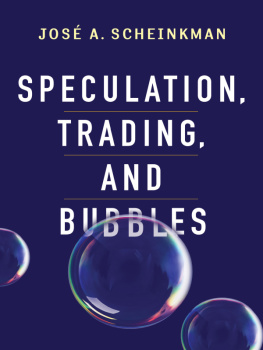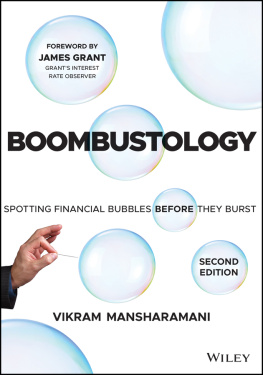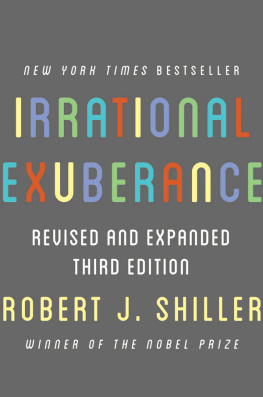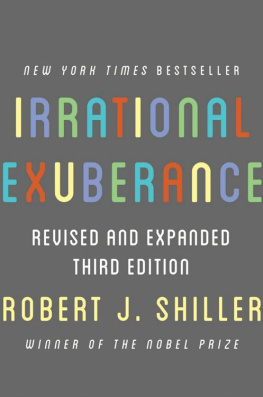Nearly all of the data used in this book are from Global Financial Data. Many of the concepts in this book were originally developed and refined by Benjamin Graham, David Dodd, Robert Shiller, and many others too numerous to list.
We update the global CAPE ratio values on our website, The Idea Farm, each quarter with archives:
The books homepage can be found at www.globalvaluebook.com.
Introduction What Is A Bubble Anyway?
What exactly is a bubble?
The Merriam-Webster dictionary definition of a bubble is a state of booming economic activity that often ends in a sudden collapse. Some people define a bubble as an extreme upward deviation from a long-term price trend, while others declare a bubble when price decouples from an assets fundamental value. In many cases, fundamental value is relative - how much worth a Van Gogh painting or a 1963 Corvette has to you may be very different from its worth to someone else. For example, Steve Cohen finds $10,000,000 worth of value in the sculpture The Physical Impossibility of Death in the Mind of Someone Living, while another may simply see in the sculpture a dead and rotting shark.
Of course, financial assets are a little different than muscle cars and art in that they generate a stream of cash flows through dividends or interest payments that act as an anchor to an estimate of fundamental value. Emotions, such as greed and fear can determine asset price movements in the short term, often causing prices to decouple from their fundamental values. It is a sure sign that a bubble exist in an asset class when a particular irrationality sets in and begins to govern our investing decisions. Think of the rush on tulips and futures in the 1600s that skyrocketed their prices to the value of a house, or when everyone wildly poured their money into Internet stocks in 1999, or frantically flipped real estate in 2006. In many cases, debt and leverage are employed to magnify the effects of the speculation.
Yale economist and recent Nobel Prize award-winner Robert Shiller conveyed to NPR that a bubble is like a mental illness and has the following characteristics:
A time of rapidly increasing prices.
People tell each other stories that purport to justify the reasons for the bubble.
People tell each other stories about how much money theyre making.
People feel envy and regret that they didnt participate.
The news media are involved.
There is a lot of talk these days about bubbles, and while the US Treasury bubble talk has subsided a bit, it may be replaced with the social media bubble, the farmland bubble, or perhaps the Bitcoin bubble. More than likely, there is a bubble in talk of bubbles! People tend to vividly remember recent painful events like losing a lot of money, and given the two large equity bear markets within the past 15 years in the US, investors may be overly sensitive to the recent past. But, as Cliff Asness, Founder of AQR Capital Management, clarifies in a recent Financial Analysts Journal article My Top 10 Peeves, the term bubble has been diluted in the popular vernacular. A bubble should technically refer to a specific pattern of investment behavior, but instead has come to refer, more generally, to any perception of overvaluation. Asness writes:
To have content, the term bubble should indicate a price that no reasonable future outcome can justify. I believe that tech stocks in early 2000 fit this description. I dont think there were assumptions short of them owning the GDP of the Earth that justified their valuations. However, in the wake of 1999-2000 and 2007-2008 and with the prevalence of the use of the word bubble to describe these two instances, we have dumbed the word down and now use it too much. An asset or a security is often declared to be in a bubble when it is more accurate to describe it as expensive or possessing a lower than normal expected return. The descriptions lower than normal expected return and bubble are not the same thing.
On the other extreme, there are those who believe that market bubbles dont exist at all. Or, if they do exist, proponents believe that you cannot reliably identify bubbles ahead of time in order to avoid their destruction to your portfolio. Followers of the Efficient Market Hypothesis (EMH), such as Eugene Fama, the American economist and fellow Nobel laureate, follow this philosophy. Here, Fama offers his opinion from a 2010 interview with The New Yorker:
I dont even know what a bubble means. These words have become popular. I dont think they have any meaningIts easy to say prices went down, it must have been a bubble, after the fact. I think most bubbles are twenty-twenty hindsight. Now after the fact you always find people who said before the fact that prices are too high. People are always saying that prices are too high. When they turn out to be right, we anoint them. When they turn out to be wrong, we ignore them. They are typically right and wrong about half the timeThey [bubbles] have to be predictable phenomena.
So where does this leave us? Can we or cant we predict when a bubble is occurring? Below we search for clues in one of the most famous bubbles of all time before trying to find an objective way to identify bubbles, avoid their popping, and invest in their aftermath.
Chapter 1 - Bubbles Everywhere
A fellow student of bubbles, Jeremy Grantham at Grantham, Mayo, Van Otterloo and Co. (GMO) has collected data on over 330 bubbles in his historical studies. He points out in a recent research piece, Time to Wake Up: Days of Abundant Resources and Falling Prices are Over Forever, that one of the key difficulties is distinguishing when a bubble is indeed occurring, and when there actually is a paradigm shift. In other words, when is this time really different?
Three of the most famous bubbles in history are the South Sea Company bubble of 17111720, the Mississippi Company bubble of 17191720, and the Dutch tulip mania of the early seventeenth century, all of which saw drawdowns from peak to trough of 80-99% (Dreman, Contrarian Investment Strategies). We are not going to review these bubbles at length as many have done a wonderful job already, and we have included a reading list at the end of this piece for further exploration. While tulip mania and the Mississippi Company are both fascinating narratives, this introduction focuses on the South Sea Bubble of 1711-1720 since the term bubble was actually coined during this period.
The South Sea Company was a British company founded by the high-ranking government official Lord Treasurer Robert Harley. England had amassed a large national debt during the War of Spanish Succession, and the company was founded to help fund the government debt in a roundabout way, since the Bank of England had the only banking charter at the time. The South Sea Company issued new shares of stock to existing bondholders of the government debt. In exchange for assuming the debt, the government granted the company a monopoly on trade with South America while continuing interest payments on the debt in the amount of 6% per year.






